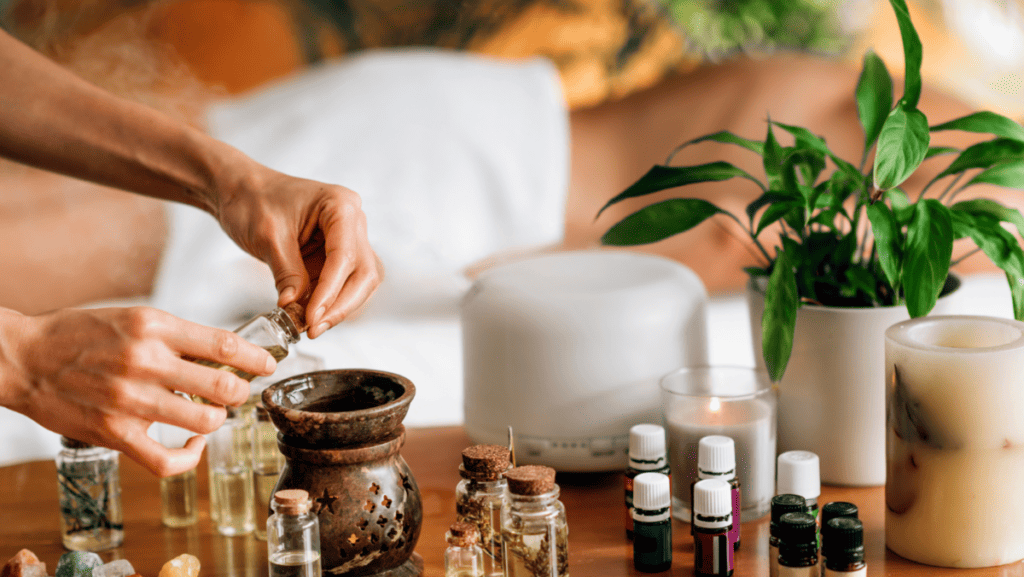Could it be subconscious blocks holding you back from crushing your goals and attaining the life of your dreams? Our subconscious mind is extremely powerful! In fact, it is believed that our subconscious minds are responsible for 95% of our personality, behaviors, and daily actions. That would mean that your conscious mind is only responsible for 5% of your daily actions. Getting familiar with your subconscious limitations and blocks is an important step to gaining control of your present and your future life. Here are 10 signs or indicators that may suggest the presence of subconscious blocks or limitations.

1. Self-Sabotaging Patterns
Do you keep repeating the same destructive patterns over and over? Maybe the patterns are not themselves destructive, but the way you feel by experiencing the same patterns over and over make you feel defeated. Repetitive patterns of self-sabotage in your life, where you consistently undermine your own success or happiness is a strong sign that you have limiting beliefs that your Higher-Consciousness, God, the Universe, whatever you call it keeps recycling the lesson you have yet to learn.
If you find yourself repeating the same lessons over and over, or you continue to use self-destructive behaviors, such as procrastination, fear of failure, analysis paralysis, etc. acknowledge your feelings, after all every feeling you have is valid, but validity doesn’t always help you live your best life. Set a plan and stick with it, regardless of how you feel about it. You can write it all down later, after you have looked at fear of failure in its face and move forward in spite of your fears or tendency to procrastinate.
2. Limiting Beliefs
Identify recurring negative beliefs that hold you back or create self-doubt. These beliefs often start with phrases like “I can’t,” “I’m not good enough,” or “I don’t deserve.” They may limit your sense of self-worth, confidence, or your belief in what is possible for you. It may take a little searching to identify these if you have been living with these negative beliefs for a long time.
Every time you begin to think negative thoughts, immediately follow up with a positive thought, such as, “Of course I can,” “I am excited to show up,” or “I deserve,” this may feel foreign or uncomfortable for a while, but no one has ever grown with being comfortable! We need moments of uncomfortability which helps us grow and mold ourselves into the people we want to be.
3. Persistent Negative Emotions
Consistent negative emotions such as fear, anxiety, guilt, shame, or unworthiness that seem to surface without a clear reason or trigger is a sign that you have limiting beliefs that need to be faced and addressed. These emotions may be rooted in subconscious programming or unresolved emotional traumas.
Journaling is always a good thing to do when you are searching for unresolved issues that may not be apparent in your conscious mind. In addition, if you choose to work with a therapist or trained professional, free writing in a journal may help your therapist guide you in a more direct way and get to points of enlightenment faster.
4. Inconsistent Results
Notice a pattern of inconsistent or short-lived results in certain areas of your life despite your efforts? This could indicate an underlying subconscious resistance or block that prevents sustained progress or success.
Journaling can help identify your limiting beliefs. The good news here is that if your results are inconsistent, you already know that you are capable of getting results, your job now is just to uncover and address the limiting beliefs that are holding you back.
5. Difficulty Making Decisions
Do you struggle with making decisions or taking action, experiencing a sense of indecisiveness or feeling stuck? This may stem from conflicting subconscious beliefs, values, or fears that create internal resistance.
You can learn to trust yourself by just starting to make decisions and stick with that decision. We all do the best we can with the information and knowledge we have in any given moment. Don’t let analysis paralysis keep you back. You have everything in you at this very moment to make the decisions you want. Follow through with your decisions. If you were wrong, you can address it later, even a wrong decision is better than not making a decision. If you make the wrong decision, you learn and grow. If you fail to make a decision, you remain stuck in your current situation.
6. Chronic Self-Criticism
Do you engage in persistent self-criticism or negative self-talk that diminishes your self-esteem and self-confidence? This critical inner voice often stems from subconscious programming acquired through past experiences or external influences.
When you notice this negative self-talk is holding you back, write down or take a mental note about the self-criticism; combat it with positive affirmations that you believe in about yourself. You are capable of what you put your mind to, combat your negative self-talk with positive realities that your conscious mind knows as truth.
7. Relationship Challenges
Do you experience recurring challenges or patterns in your relationships, such as difficulties in establishing trust, maintaining healthy boundaries, or experiencing recurring conflicts? These patterns can be influenced by subconscious beliefs, fears, or unresolved emotional patterns.
Talking to and working with a therapist is a good option to address your specific attachment styles, childhood traumas, and limiting beliefs. Shadow work is also beneficial to do when working on the parts of you that struggle in relationships.
8. Lack of Clarity or Direction
If you feel uncertain or lack clarity about your life purpose, goals, or direction it may be a sign of limiting beliefs. This is especially true if you find it challenging to define what you truly want or to take the necessary steps to pursue your passions and aspirations.
It’s okay to start with smaller goals. Start with what you want to get done today. Make and accomplish small goals with a short time span and gradually increase your goals to be bigger with longer timeframes. The further out you can go, the more you will feel in control of your life.
9. Resistance to Change
If you encounter resistance or discomfort when attempting to make positive changes or step outside of your comfort zone, then this is another sign you have subconscious blocks. These blocks can create resistance to change, making it difficult to embrace new opportunities or break free from old habits.
Start small. Just as with goal setting, start with where you are. Today. Change is difficult for most people, we are creatures of habit, and when our routine changes it can feel like our world is falling apart. This can even be true with the good changes in our life. Know in your heart that you will grow into the new opportunities and the new you. Pay more attention to the positive outcome of the positive changes that will take place in your life, rather than the change itself.
10. Recurring Dreams or Symbols
Take notice of recurring dreams, symbols, or imagery that may point to subconscious conflicts, fears, or unresolved emotions. Pay attention to recurring themes or symbols that emerge during your dream state, as they can provide valuable insights into subconscious blocks.
Keeping a journal by your bed and waking up 10 minutes earlier to free write and take note of your dreams when you wake up. There is no better time to have direct access to your subconscious thoughts, desires, and fears than first thing in the morning. You can just free write if you don’t remember your dreams which will still give you the best time to access the subconscious mind. If you are a person who remembers your dreams, write about what happened, but also how you felt, and the emotions involved to analyze your dreams for underlying subconscious thoughts.
Moving Forward

Take note of these 10 signs of limiting beliefs and subconscious blocks that can be in the way of you and the life you want to live. Working with a trained professional is always a good idea, as they can help you achieve your goals faster and confront problem areas with more precision than you can do on your own. However, if you choose to go at this on your own and want to get serious about confronting your limiting beliefs and subconscious mind, then get comfortable with writing in your journal, getting comfortable with turning inward through meditation and being open to receiving and acting on inspired thoughts that will inevitably come to you as you continue on your journey.






